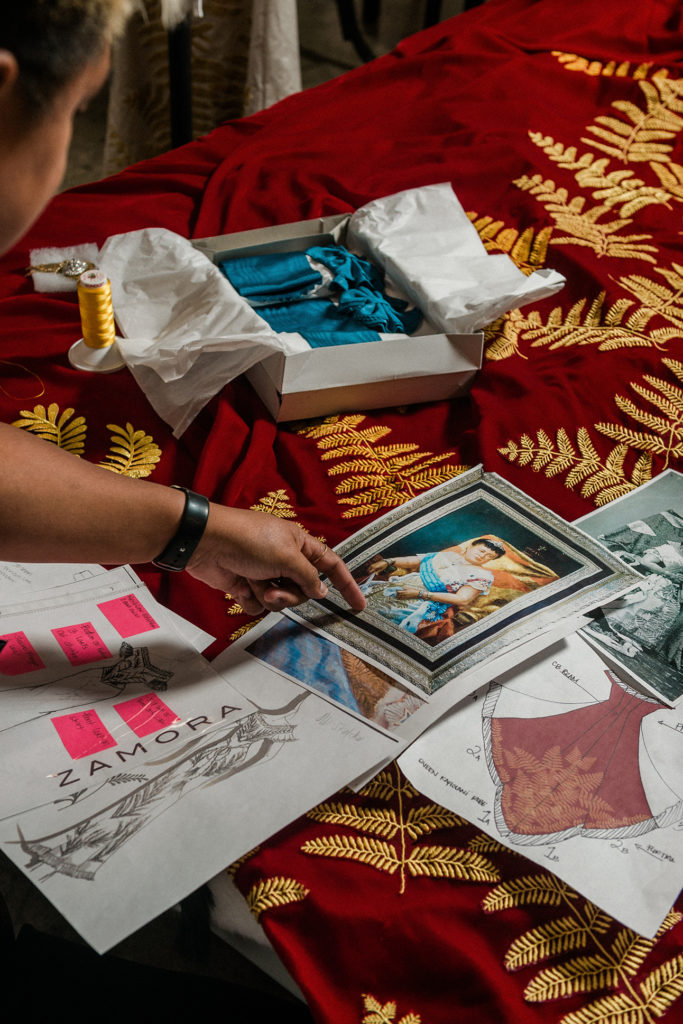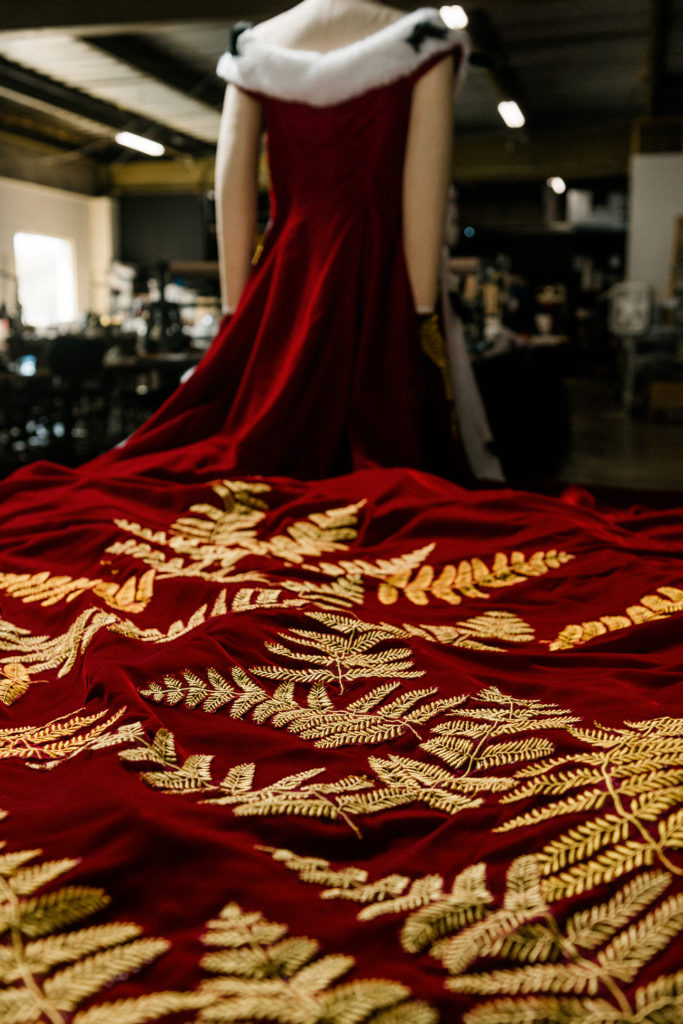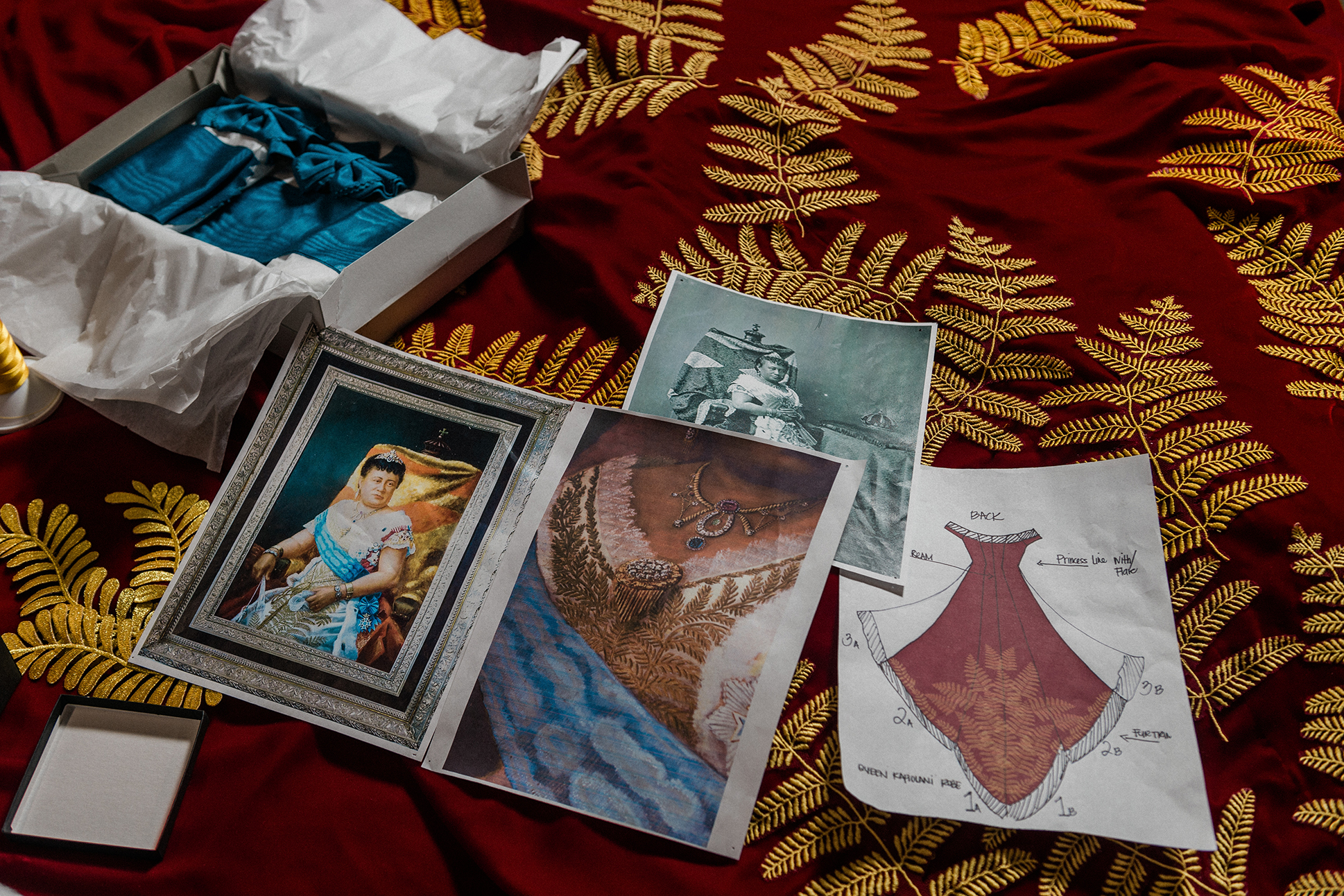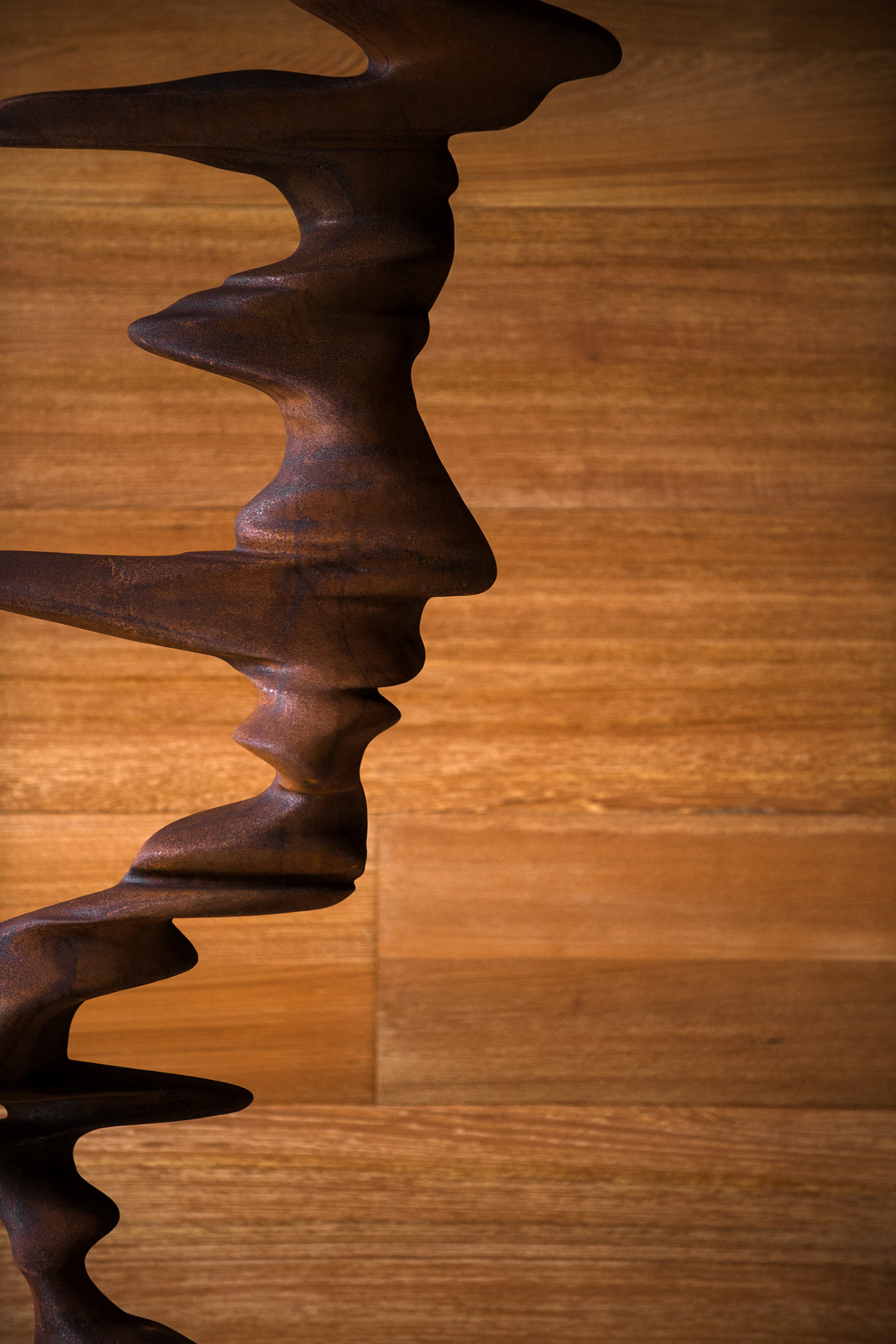Text by Kylie Yamauchi
Images by John Hook and artwork courtesy of ‘Iolani Palace
On February 12, 1883, jubilant throngs of spectators flowed onto the grounds of ‘Iolani Palace for Hawai‘i’s first official coronation ceremony. It was anything but a usual Monday; people had taken off work for the public event and arrived in their best attire. In reserved areas, government dignitaries puffed out the royal insignia on their chests, as their wives sat with perfect composure in tightly laced gowns. Kingdom subjects filled the seats of the temporary amphitheater, the wāhine gliding in their best mu‘umu‘u and the kāne striding tall in their suits.
As the procession began, journalists readied their pens, eyes straining to catch every detail. From the sea of craning necks, King David Kalākaua and Queen Kapi‘olani emerged, both dressed in royal attire able to match that of England’s monarchs. But it was the original Euro-Hawaiian gown that Kapi‘olani wore that captivated journalists and the couture crowd, as well as historians today.
The Victorian gown was made of white satin and embroidered with golden palapalai fern leaves from her chest to her ankles. A deep turquoise sash draped across her right shoulder down to her left hip. In true English royal fashion, a heavy crimson red robe with ermine-fur trim rested on the queen’s shoulders, where the ferns continued to fall down her back. A delicate fringe danced on the sleeves and hem of the gown with each step she took toward the pavilion.

The queen reappeared in the coronation gown in 1887 at a different sort of palace: the White House. President Grover Cleveland threw a ceremonial dinner for Queen Kapi‘olani and Princess Liliu‘okalani, who had stopped in the United States on their way to attend Queen Victoria’s Golden Jubilee in England. Kapi‘olani was honored and received much attention for being the first queen to visit the young country. In a story published the following day, The New York Times called the gown “a Court dress of Hawai‘i,” rather than attributing it to English fashion.
After 1887, there was no mention of the gown again. Today its whereabouts are unknown. According to ‘Iolani Palace historian Zita Cup Choy, the ali‘i were just like regular people; they gave away unused clothes to relatives and sometimes auctioned them off when they were in need of money. The only remaining evidence of it are a handful of newspaper clippings, a few black-and-white photos, and a detailed painting of the queen sitting in her gown. These sources were all that Native Hawaiian fashion designer Kiniokahokuloa Zamora had to work with in recreating the queen’s gown for ‘Iolani Palace.
Fortunately, Zamora was no stranger to design challenges. In 2014, he starred in season 13 of the hit TV show Project Runway, competing against 17 designers from across the United States. In each episode, the contestants competed to create outfits based off quirky themes ranging from futuristic societies to American Girl dolls. The Kalihi local finished third, and in 2016, he returned for the show’s spinoff, in which he was runner-up.
When ‘Iolani Palace announced in January 2019 that it would commission Zamora and his small team to expand its ali‘i garment reproduction project, he was prepared to work under pressure and with limited resources. For the project, designer Iris Viacrusis had already recreated two gowns of Kapi‘olani and two gowns of Lili‘uokalani, which are on display at the palace. Like Viacrusis, Zamora entered the project with knowledge of Victorian fashion, having created the costumes for Ballet Hawaii’s production of The Nutcracker.

“We wanted to create reproductions of the historic dresses to bring the ali‘i’s lives to the palace in a different matter,” said director of curation and education Teresa Valenica. While much can be said about the ali‘i through the furnishings displayed in ‘Iolani Palace, garments show their personal tastes and the ways they acknowledged certain trends. The ali‘i aimed to be fashion-forward like other global leaders, and the dresses they wore typically came from New York, London, and Paris.
The commission required Zamora to create an exact representation of Kapi‘olani’s gown. Through six months of research with the help of the palace and Bernice Pauahi Bishop Museum, the designer reimagined the lost creation. “If I wasn’t on a deadline, I’d want to take a whole year or more to keep researching,” Zamora said. “I still have to pinch myself some days that I’m doing this project.”
In the process, he learned that the designer of the gown, Charles Furneaux, was also the artist who painted Kapi‘olani wearing it. The painting became a main reference in the design process, particularly when determining the color of the fabrics; according to Zamora, the fabric for the deep turquoise grosgrain moir sash was incredibly hard to find. For the utmost accuracy, Zamora’s graphic artist, Alexander Propios, digitized the palapalai in the painting to reproduce the palapalai embroidery.

Wanting to share this project with his lāhui, Zamora invited community members to come to his studio and sew the embroidery onto the robe by hand. But this was no easy task. The palace insisted that the leaves fall in exactly the same pattern as seen in a black-and-white photo. Considering the photo only shows half of the robe, the team had to scrutinize the photo and guess the rest of the placement as best they could.
Designing a Victorian-era gown in modern times came with unavoidable accommodations. Midway through the project, I‘olani Palace found a piece of ermine fur in its archives that it believed to be from the coronation gown, confirming the trim’s material, but Zamora chose faux fur to stay within budget and be animal-conscious. He purchased materials from New York, as would have been done in the queen’s day, but the white satin he chose had more of a modern-day, Vera Wang feel, Zamora said with a laugh.
The completed coronation gown made its way to Iolani Palace in September 2019, where it is now displayed in the throne room beside Furneaux’s painting. “These gowns used to be made in London and New York,” Zamora said, beaming. “Now Hawai‘i can say, we can make them too.”





